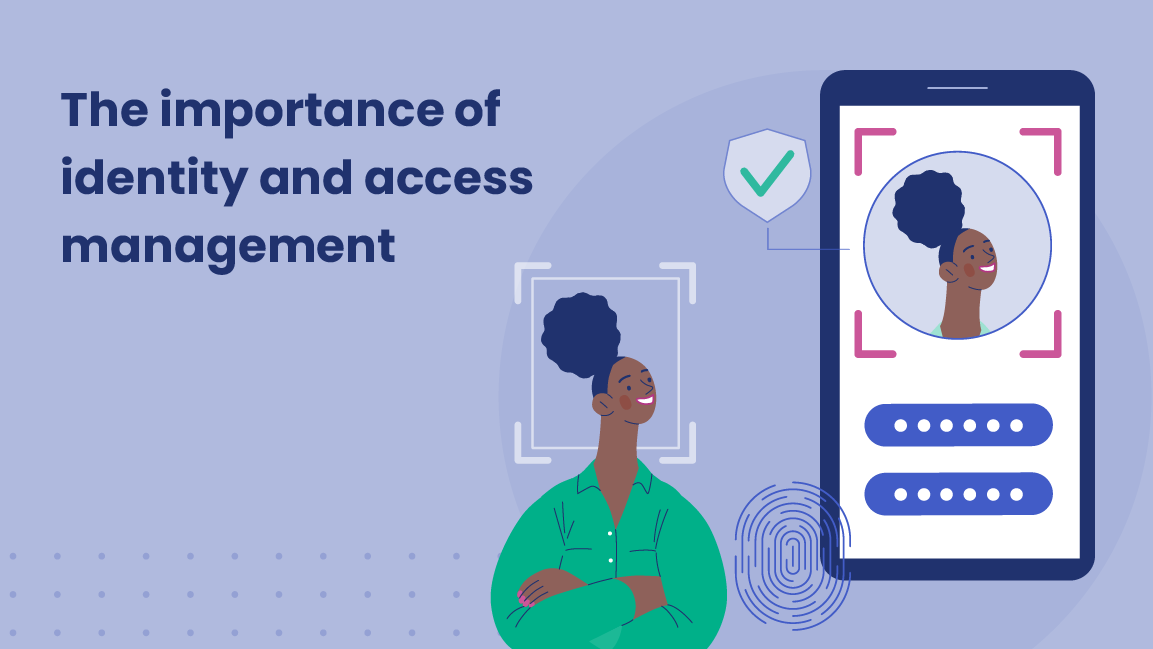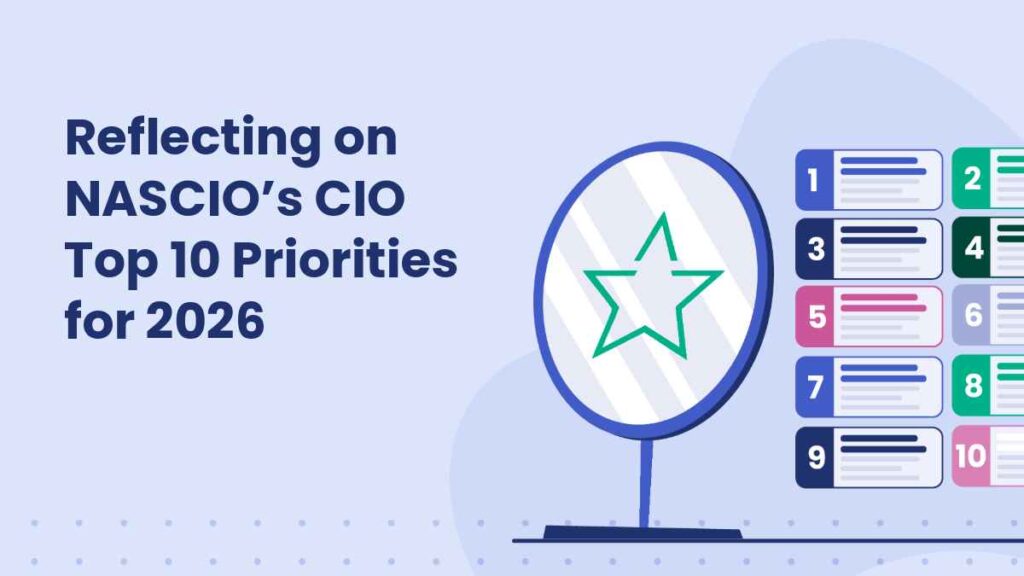The importance of IAM: Strengthen government security and resident trust

As agencies increasingly look for ways to improve security, identity and access management (IAM) is a top concern for jurisdictions across North America. With this shift already in motion, it’s not surprising that Gartner cited IAM as one of 2024’s top six cybersecurity trends.
What’s identity and access management?
Identity and access management are essential components of an agency’s security protocol. Using technology and business processes, IT teams can ensure that only authorized users have permission to access a system or information while denying unauthorized users access, avoiding fraud.
In short: IAM allows authorized users to access their accounts and keeps hackers out.
An IAM system works off a database that contains details about users, including permission specifics. Using that information, IAM systems can verify identities, monitor activities, and pinpoint and deflect bad actors.
To help prevent hacks and fraud, governments are implementing security measures such as single sign-on, a single digital identity, and multi-factor authentication (MFA).
Key IAM terms to know
- Authentication: How a user proves their identity
- Authorization: Organizes users and defines access permissions
- Single sign-on (SSO): Permits users to access multiple related systems with one ID and password
- Identity verification: Process of a user proving they are who they claim to be (also called verification process)
- Multi-factor authentication (MFA): A method that requires users to provide two or more verification factors to gain access
- Time-based one-time password (TOTP): A unique, time-based password that’s refreshed at regular intervals (a common step in multi-factor authentication)
Ideally, IAM protocols help maintain security without causing disruption to legitimate users.
Challenges governments face with identity and access management
Like the private sector, governments are using more cloud environments and AI; have increased the availability of digital services; and have remote staff, so there’s a greater need to secure access for more users in more locations.
When residents or employees have to navigate multiple systems to access services or do their jobs, security challenges become a big issue. Vulnerable areas include:
- The need to access and use several disconnected systems (all with different profiles, user logins, and passwords)
- Having to manually update and maintain information for multiple systems on a regular basis
- Setting up numerous levels of access privileges for multiple systems (and the responsibility to activate and deactivate accounts)
- Process changes as in-house systems integrate or are replaced with cloud applications
And the combination of a rapidly growing digital user base with (all too common) outdated legacy systems is straining agencies — burdening customers and staff alike.
Stronger security with effective identity management
It’s common in this industry to hear, “We need a single digital identity,” or “We need MFA to be more secure.” It’s a good sign that government tech leaders know how important IAM is to digital transformation.
Most agencies work with a combination of legacy systems and newer cloud-based applications and services. In these complex environments, IAM solutions can streamline authentication and access control:
- Provide fast, accurate data security
- Maintain integrity
- Consistently meet compliance regulations
While IAM is practically table stakes at this point, it’s important that agencies don’t overengineer their protocols (and make access more difficult than necessary).
A few foundational questions:
- What service or actions are required?
What task does your staff need to be able to accomplish? Do clerks work with different data than leadership? What about residents? Does every person need to pay property taxes, or are some people only paying for vehicle renewals, for example? Providing users with more (or less) access than they need is cumbersome — and not best practice from a security standpoint.
- How sensitive is the information?
Your IAM measures should work with context, matching the sensitivity of the information to the level of access. Policies should be in place to safeguard an account with personal data, for example. Device status, IP address, the type of resource, time, or geographic location can all trigger a second form of authentication.
On the other hand, accessing a help page or interacting with an online chat might not need such stringent security measures — and over-indexing authentication during these tasks could put off consumers.
- What benefit does the user receive?
Related to the above question, this one is a simple concept, but harder in practice: Do your IAM policies build trust? Do they make sense to users and maintain strict security standards?
Operate more effectively with IAM
The security benefits of IAM are just one (albeit, important) piece of the puzzle. But IAM can have other positive effects for your government.
- Cut costs: You might be able to cut costs by using a cloud-based IAM service — eliminating the need for on-prem infrastructure, reducing the workload for IT, and significantly reducing the chance of an expensive data breach.
- Improve resident trust: With IAM best practices in place, people are less worried about fraud and more likely to engage with digital government services.
- Centralized access control reduces friction: Unified user profiles allow you to grant secure access to employees across multiple channels with one login (so your staff isn’t forced to remember and enter multiple passwords every day).
- Help break down silos: Moving forward with digital transformation will require collaboration between an internal security team and an external managed service provider, for example. IAM provides a secure, quick, and easy way to handle permissions processes.
What to know about implementing IAM
Ready to get started with an IAM strategy? As you move forward, here are a few things to keep in mind:
- Schedule mandatory internal training: Set regular, recurring training sessions for your team. Cover topics such as secure passwords, how to recognize phishing attempts, and your access control policies. The goal is to foster a security-conscious team culture.
- Test, test, test: Deploy automated tools to look for vulnerabilities and potential gaps.
- Review and update access rights: User permissions should be updated often. Perform regular reviews to confirm that users have the least amount of access they require. (Parts of this process can also be automated.)
Advance digital government services with security and efficiency
Yes, a well-executed IAM solution helps prevent fraud, but it also improves the user experience and makes your agency more flexible and scaleable. The security of government agencies and residents depends on a strong and thorough IAM solution. By channeling resources into IAM tools and staff training, governments can advance their cybersecurity measures, shielding the agency and residents from fraud.
Looking for more content?
Get articles and insights from our monthly newsletter.




